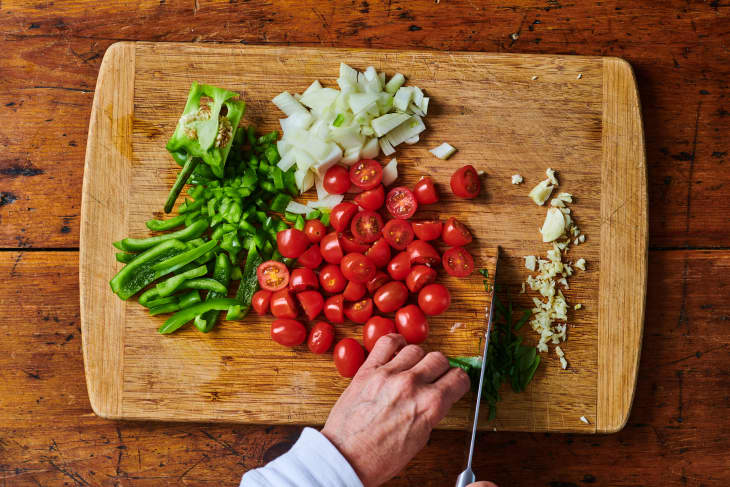Choosing the right color cutting board is more than just a stylistic choice; its essential for maintaining food safety, particularly when preparing fresh fruits and vegetables. In professional settings, knowing how to pick the right color cutting board is vital for hygiene and preventing cross-contamination.
For culinary experts, color-coded cutting boards are indispensable tools. They not only help keep the kitchen organized but also significantly contribute to food safety. By using different colored boards for various food types, you can greatly minimize the risk of cross-contamination. Lets explore this fascinating topic further!
:max_bytes(150000):strip_icc()/prevent-cutting-board-slipping-1123-c9837c7f958745b792c2b115c7d7bccd.jpg)
Why Color-Coding Matters
Color-coding cutting boards is a common practice in professional kitchens. Each color serves a specific purpose, helping chefs easily recall which board to use for different foods. For instance, green boards are usually reserved for vegetables, whereas red ones are meant for raw meat.
Implementing this technology helps streamline food preparation and ensures that all kitchen staff adhere to sanitation and safety protocols.
Your Color-Coding Guide
Heres a commonly accepted color guide that many culinary professionals follow:
- Green: Ideal for fresh fruits and vegetables.
- Red: Used specifically for raw meats.
- Blue: Primarily designated for seafood.
- Yellow: For cooked meats or poultry.
- White: Typically for dairy products and baked goods.
Adhering to this guide can dramatically mitigate the risks associated with cross-contamination. Its a significant leap toward ensuring the safety of your kitchens food.
Why Color Is Crucial: The Surprising Facts
Many kitchen professionals underestimate the importance of cutting board colors. Some might assume that any board will suffice, but that assumption can be quite risky. Different food groups can harbor different bacteria, and using the same board for all can lead to serious foodborne illnesses.
The World Health Organization underscores the necessity of using distinct cutting boards for various food items. The correct selection and cleaning of cutting boards isnt just a matter of preference but an essential practice.
Picking the Right Cutting Board Material
While color coding is critical, the choice of material for your cutting boards also significantly impacts food safety. Here are some popular materials:
- Wood: Known for its natural antimicrobial qualities and is often favored for cutting fruits and vegetables.
- Plastic: More economical and easier to clean but can develop grooves over time that may trap bacteria.
- Bamboo: An eco-friendly alternative thats rapidly gaining popularity.
Research suggests that wooden cutting boards may be less likely to harbor bacteria compared to plastic ones. For further insights, check out this discussion on cleaning wood boards.

Caring for Your Cutting Boards
Proper care and maintenance of cutting boards extend their longevity and keep them safe for food preparations. Generally, hot, soapy water suffices for plastic boards, but wooden boards require a bit more attention. The National Sanitation Foundation recommends a vinegar-water mixture for cleaning wooden boards.
Regular **oiling** of wooden boards helps maintain their structure and resilience. For additional maintenance tips, see this guide on cutting board care.
Frequently Asked Questions
1. What color cutting board is best for fruits and vegetables?
Generally, a green cutting board is recommended for fruits and vegetables, keeping them separate from meats and other items.
2. Are wooden cutting boards safe for fruits and vegetables?
Absolutely! Wooden cutting boards are safe and often preferred for fruits and vegetables thanks to their natural antimicrobial properties.
3. How often should I replace my cutting boards?
It's best to replace cutting boards when they become heavily worn, develop deep grooves or cracks, or are difficult to clean.
As an Amazon Associate, I earn from qualifying purchases.


























